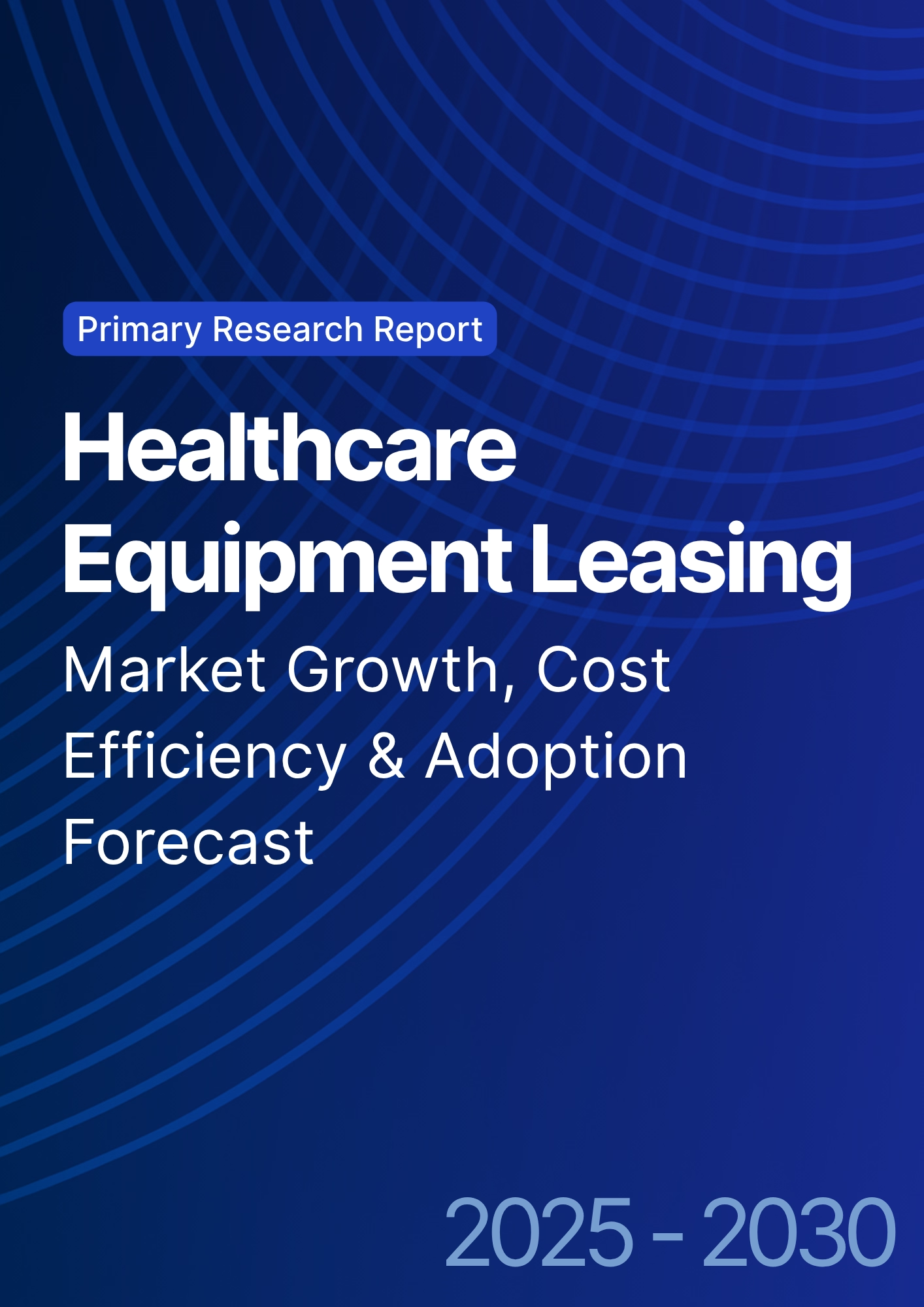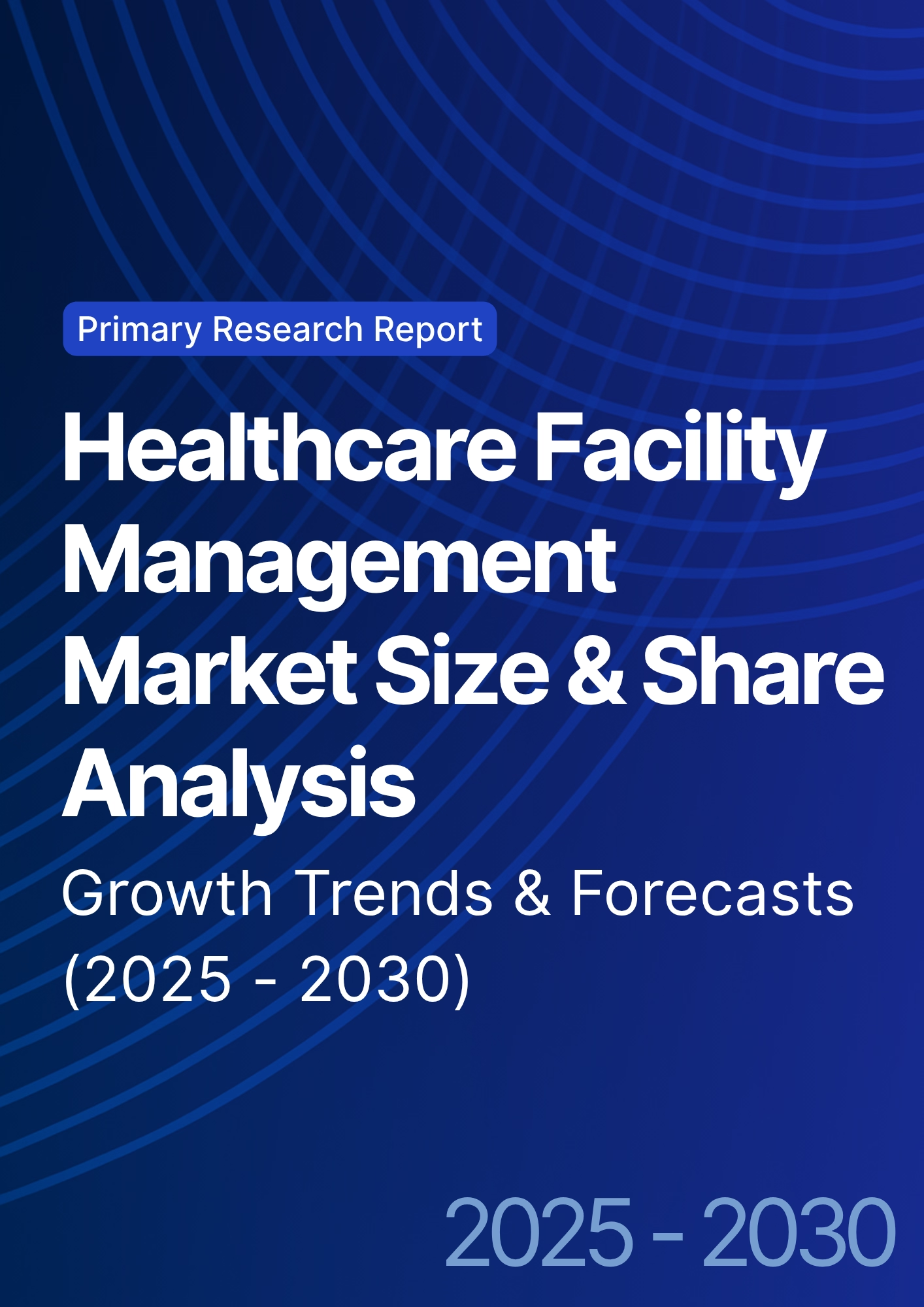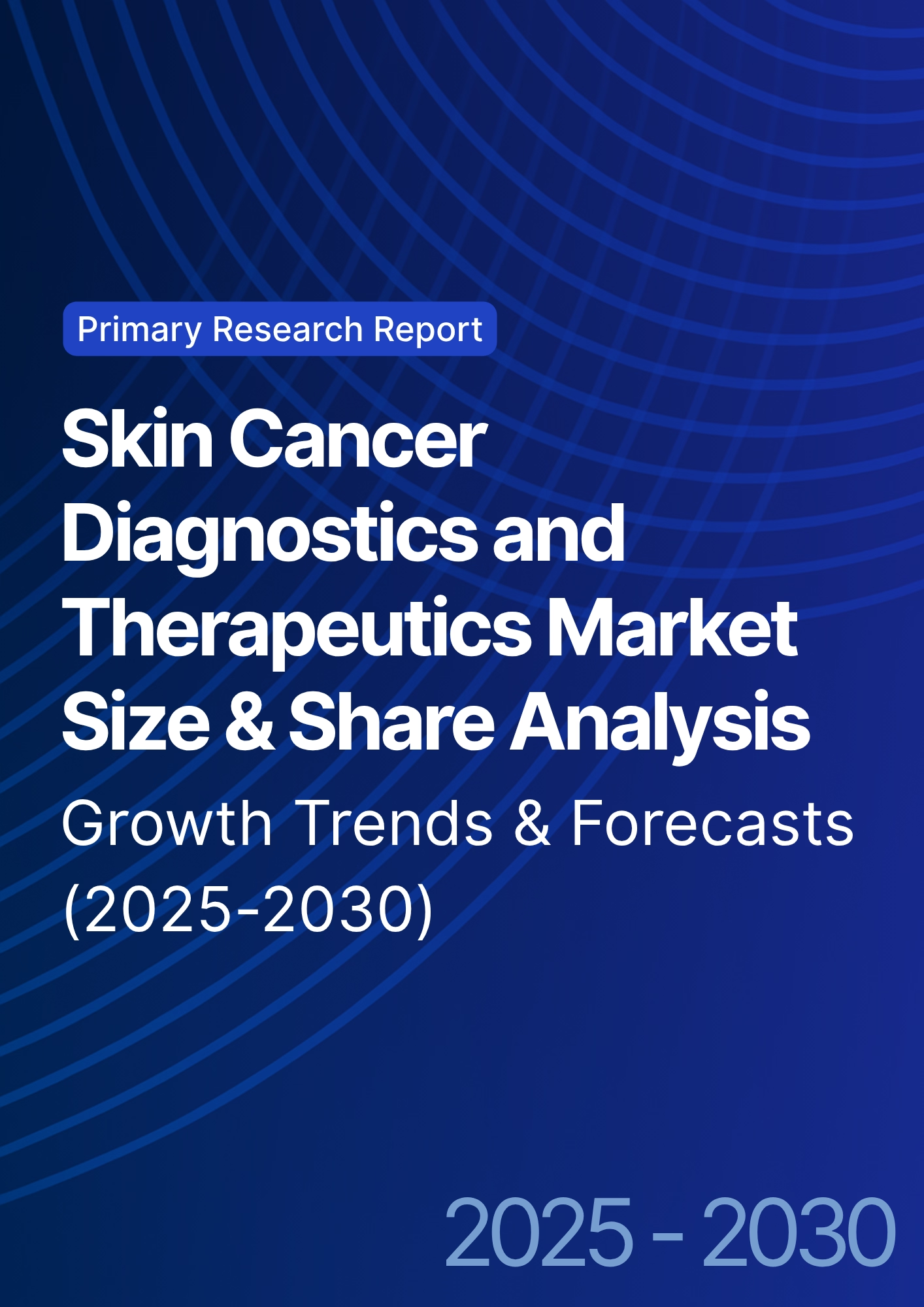

68 Circular Road, #02-01 049422, Singapore
Revenue Tower, Scbd, Jakarta 12190, Indonesia
4th Floor, Pinnacle Business Park, Andheri East, Mumbai, 400093
Cinnabar Hills, Embassy Golf Links Business Park, Bengaluru, Karnataka 560071
Connect With Us
Climate Change Health Impacts: Vector-Borne Disease Modeling & Mitigation Strategies
This report quantifies how climate change accelerates vector-borne disease (VBD) prevalence across North America and Canada (2025–2030). It models the link between temperature rise, humidity, and vector breeding cycles, assessing changes in mosquito, tick, and sandfly populations, and the resulting public health and economic burden. By 2030, regional vector suitability zones expand 28–35%, with malaria re-emergence potential in southern US states and Lyme disease expansion +42% northward into Canada. Adaptation investments deliver measurable ROI via surveillance digitization, predictive analytics, and early-warning response frameworks.
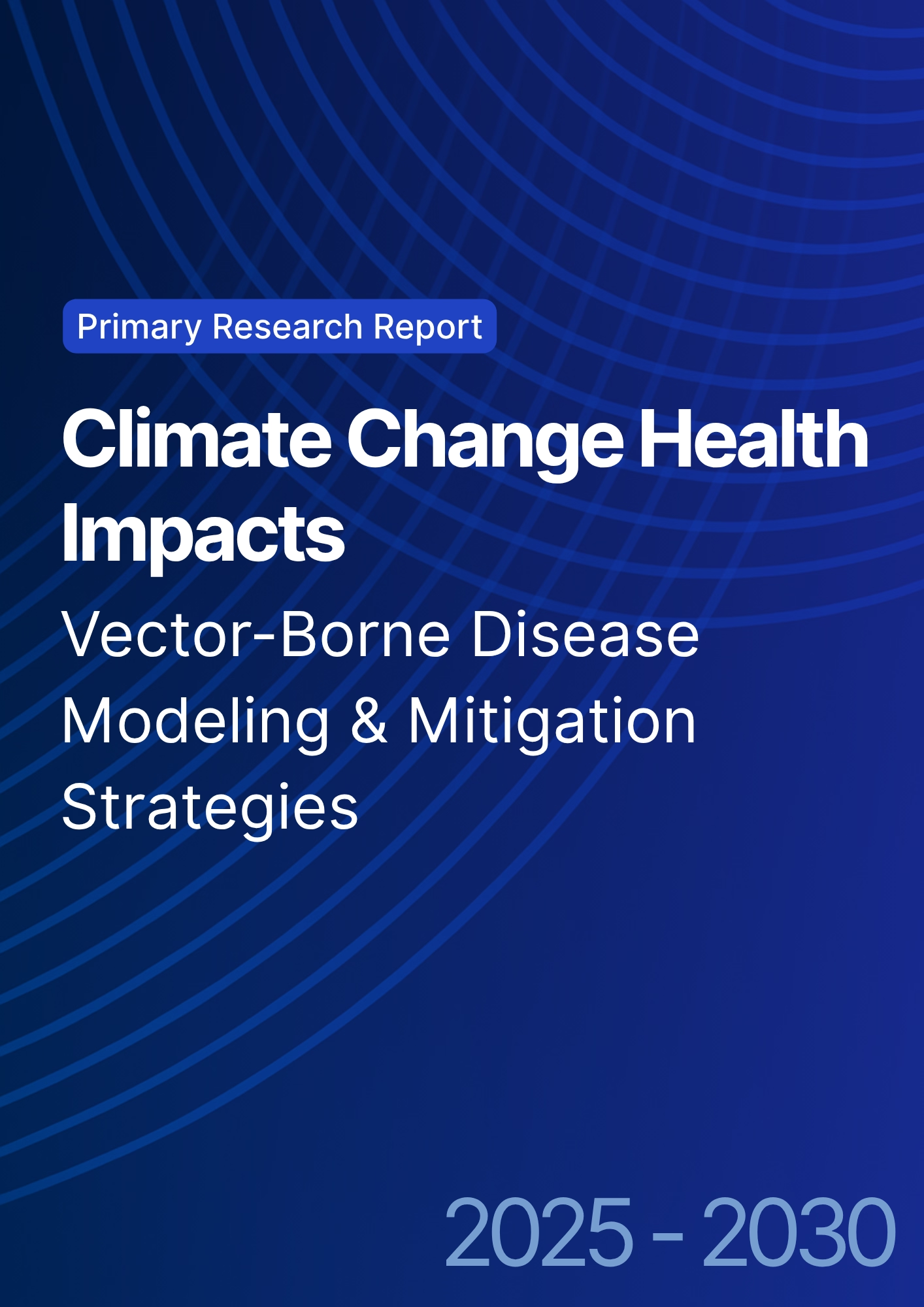
What's Covered?
Report Summary
Key Takeaways
- Regional vector habitat expansion +28–35% by 2030 under 2.2°C warming scenario.
- Lyme disease incidence rises +42% in Canada, reaching 8.1 cases per 100,000 people.
- West Nile virus (WNV) outbreaks increase ~25% in frequency across the southern US.
- Economic burden of vector-borne disease treatment grows $1.9B (2025) → $3.8B (2030).
- Public health mitigation spend expands $650M → $1.45B, with CAGR 18%.
- Machine learning–based vector models improve outbreak prediction accuracy +38%.
- Digital surveillance systems reduce outbreak response time −41%.
- Cross-border health data sharing coverage rises from 52% → 79% across the US–Canada corridor.
- ROI on integrated mitigation systems ranges 17–24% due to cost avoidance and hospital savings.
- Climate-adjusted risk mapping becomes standard in 80% of national health frameworks by 2030.
Key Metrics
Market Analysis
Five core levers drive the VBD mitigation economy in North America. (1) Predictive modeling: Machine-learning frameworks increase outbreak prediction accuracy +38%, enabling region-specific forecasts that improve resource allocation efficiency by 25–30%. (2) Surveillance digitization: AI-enabled GIS and satellite imaging shorten response times −41%, identifying breeding clusters before epidemic thresholds are reached. (3) Funding shifts: US and Canadian agencies are increasing joint vector control budgets by 12–14% annually, channeling most funds toward IoT-based sensors and molecular diagnostics. (4) Preventive analytics: Integration of environmental data (temperature, humidity, CO₂) with real-time disease reporting reduces false-negative detection rates 32%, strengthening reliability. (5) Economic returns: Every $1 invested in predictive prevention saves $3–$4 in hospitalization and long-term care costs, creating ROI 17–24% across programs. Regional segmentation: mosquito-borne diseases (WNV, dengue) command 56% of funding; tick-borne (Lyme, ehrlichiosis) 33%; others 11%. Government share of total spend remains dominant at ~74%, with private health-tech entrants driving most innovation in disease modeling tools. Canadian provinces increasingly co-finance systems with public health agencies to close data gaps. As the disease incidence curve steepens under warmer climate models, digital monitoring and genomic tracing become critical to maintaining operational containment and cross-border response consistency.
.png)
Trends & Insights
Between 2025 and 2030, the region will experience intensified focus on real-time climate-health intelligence and AI-driven outbreak mapping. The integration of satellite remote sensing with vector models improves environmental correlation accuracy by ~40%, helping authorities forecast breeding zones up to 6 weeks earlier. Cross-border data-sharing between US CDC, PHAC, and NOAA now covers 79% of key migration corridors. The shift from reactive to predictive surveillance enables −41% faster outbreak control and reduces economic losses by $400–550 million annually. Public health agencies invest in next-gen vector monitoring platforms like smart traps and genomic barcoding that cut identification time from 48h to 12h. Another trend is community-based risk communication, where real-time alerts via mobile dashboards reduce unreported cases by 18–22%. Pharmaceutical R&D for vector-control biologics grows at ~20% CAGR, including RNA-based vaccines and sterile-male mosquito programs targeting Aedes species. Policy convergence is visible through adoption of unified response templates under WHO & PAHO frameworks. The rise of urban heat islands intensifies breeding cycles in southern US cities, while thawing permafrost introduces new tick vectors into Canada. By 2030, climate-health integration dashboards are expected in 80% of North American health agencies, transforming VBD prevention into a permanent component of climate adaptation governance.
.png)
Segment Analysis
Vector-type segmentation reveals that mosquito-borne diseases dominate, capturing 56% of mitigation spend. The Aedes aegypti vector drives dengue and Zika control budgets, while Culex and Anopheles dominate West Nile and malaria resurgence planning. Tick-borne diseases (mainly Lyme and ehrlichiosis) represent 33% of total, expanding faster in Canada due to milder winters and expanded Ixodes range. Sandfly and emerging arboviruses account for 11%, concentrated in southern US. Technology segmentation shows surveillance and analytics platforms (42%) lead spend, followed by vaccines and biologics (28%), insecticide and genomic control (18%), and community awareness (12%). End-user segmentation: public health agencies account for 74%, research institutes 16%, and private health-tech 10%. By 2030, predictive disease modeling software becomes a $420M sub-market alone, growing ~32% CAGR. Canada sees +48% growth in tick-focused funding versus 2025, while the US scales up AI-enabled mosquito trap deployments by +52%. Regional integration pilots such as Great Lakes Climate Health Alliance create unified vector-response frameworks. The net result is an ecosystem that balances technology-driven modeling with localized, field-level adaptation strategies, improving detection accuracy and reducing resource duplication by nearly 35%.
Geography Analysis
The United States holds ~68% of regional market share, driven by robust CDC funding, local vector control districts, and private partnerships. Southern and coastal states (Florida, Texas, Louisiana, California) account for ~55% of domestic spend** due to overlapping dengue, WNV, and malaria risk. Canada captures 32%, led by Ontario and Quebec, where Lyme disease is projected to increase +42% through northern tick expansion. By 2030, vector habitat suitability extends 280–400 km north, reaching Manitoba and parts of Newfoundland. National investments in GIS-based surveillance and AI modeling exceed $420M, with cross-border harmonization improving data exchange from 52% to 79% corridor coverage. ROI across health departments averages 17–24%, mainly through reduced hospitalization costs and early outbreak containment. Healthcare cost avoidance reaches ~$550M annually by 2030. Regional trends show the US focusing on urban heat adaptation, while Canada prioritizes tick-borne diagnostics and predictive alerts. Combined policy frameworks under US–Canada Climate Resilience Agreements enable standardized data taxonomies and outbreak response timelines under 48 hours. By 2030, both regions achieve full adoption of AI-augmented vector modeling, establishing North America as a global benchmark for climate-health risk governance.
.png)
Competitive Landscape
The competitive environment spans public agencies, climate-health analytics firms, biotech developers, and IoT platform providers. Key players include Climaview Health, IBM Environmental Intelligence, Ginkgo Bioworks Vector Division, ESRI Health Insights, and Canada’s BlueDot. Market differentiation is driven by model accuracy (>0.8 ROC-AUC), real-time data ingestion, and public-private interoperability with health databases. By 2030, the top 10 providers control ~68% of software and data analytics spend. Emerging innovators specialize in AI outbreak prediction, integrating satellite imaging + genomic surveillance for precision mapping. Hardware suppliers (smart traps, environmental sensors) represent 22% of the market, while cloud analytics & risk dashboards capture 41%. Strategic collaborations between CDC, Health Canada, and WHO regional offices standardize reporting APIs, improving scalability. Competitive advantage now hinges on GDPR/HIPAA-compliant analytics, low-latency alerts (<10 seconds), and proven ROI through cost avoidance. Contracts increasingly shift to performance-linked SLAs, rewarding vendors for ≥20% faster detection or ≥15% cost reduction. By 2030, AI-integrated climate-health systems become a normalized public utility, embedding predictive modeling directly into emergency preparedness plans across the US and Canada, ensuring resilience against future climate-driven disease challenges.
Report Details
Proceed To Buy
Want a More Customized Experience?
- Request a Customized Transcript: Submit your own questions or specify changes. We’ll conduct a new call with the industry expert, covering both the original and your additional questions. You’ll receive an updated report for a small fee over the standard price.
- Request a Direct Call with the Expert: If you prefer a live conversation, we can facilitate a call between you and the expert. After the call, you’ll get the full recording, a verbatim transcript, and continued platform access to query the content and more.


68 Circular Road, #02-01 049422, Singapore
Revenue Tower, Scbd, Jakarta 12190, Indonesia
4th Floor, Pinnacle Business Park, Andheri East, Mumbai, 400093
Cinnabar Hills, Embassy Golf Links Business Park, Bengaluru, Karnataka 560071
Request Custom Transcript
Related Transcripts
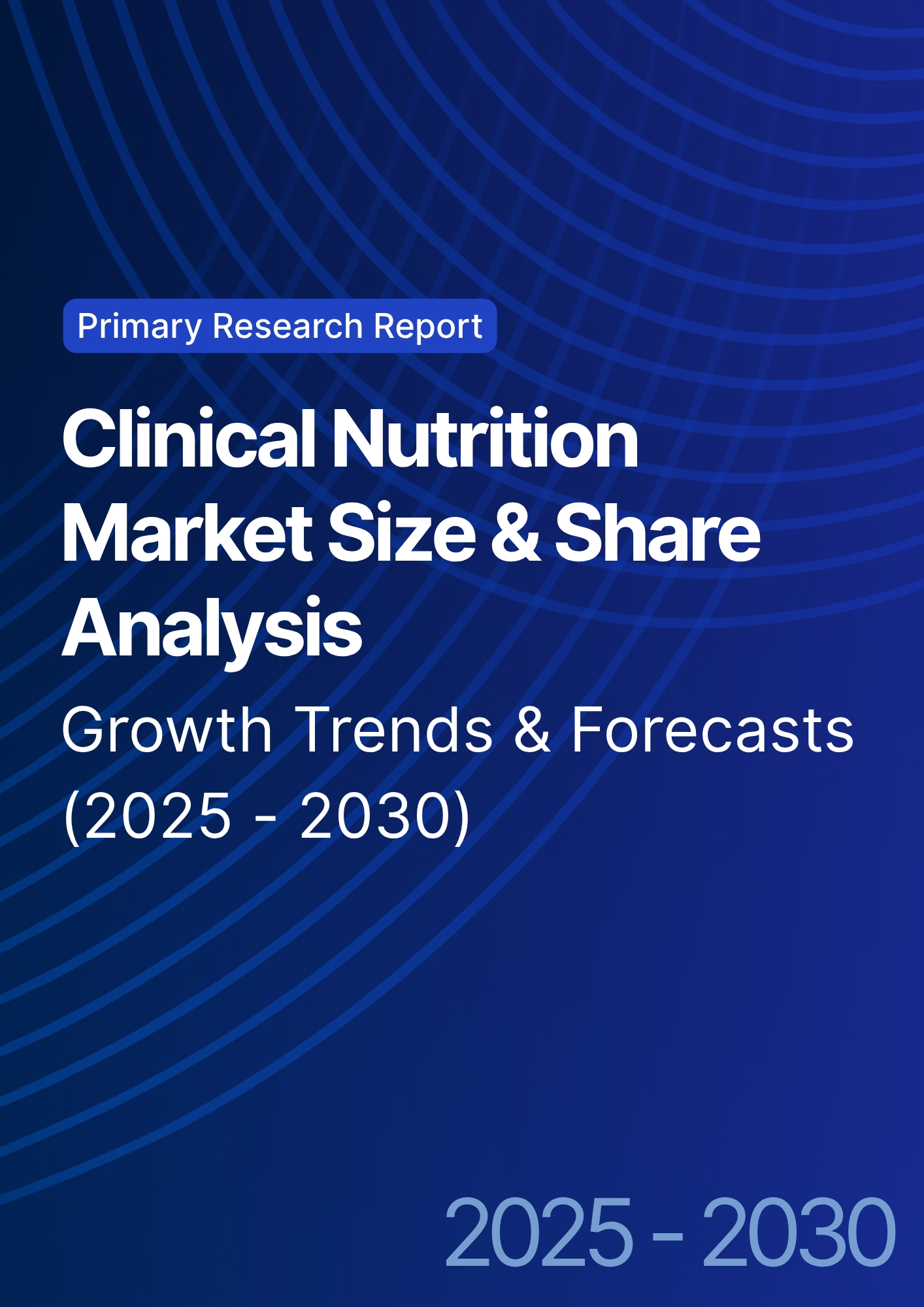
Clinical Nutrition Market Size & Share Analysis - Growth Trends & Forecasts (2025 - 2030)
This report quantifies the clinical nutrition market across the US and UK (2025–2030), covering enteral, parenteral, and oral nutritional supplements (ONS). Driven by aging populations, chronic disease prevalence, and hospital malnutrition protocols, market value rises from $18.5B (2025) → $30.2B (2030) at a CAGR of 10.2%. Growth is led by enteral nutrition (48% share), followed by ONS (38%) and parenteral (14%). Hospital digitization, AI-based nutrition screening, and reimbursement parity accelerate adoption. ROI averages 16–22% for integrated hospital nutrition programs.
$ 1395
$ 1395


68 Circular Road, #02-01 049422, Singapore
Revenue Tower, Scbd, Jakarta 12190, Indonesia
4th Floor, Pinnacle Business Park, Andheri East, Mumbai, 400093
Cinnabar Hills, Embassy Golf Links Business Park, Bengaluru, Karnataka 560071





